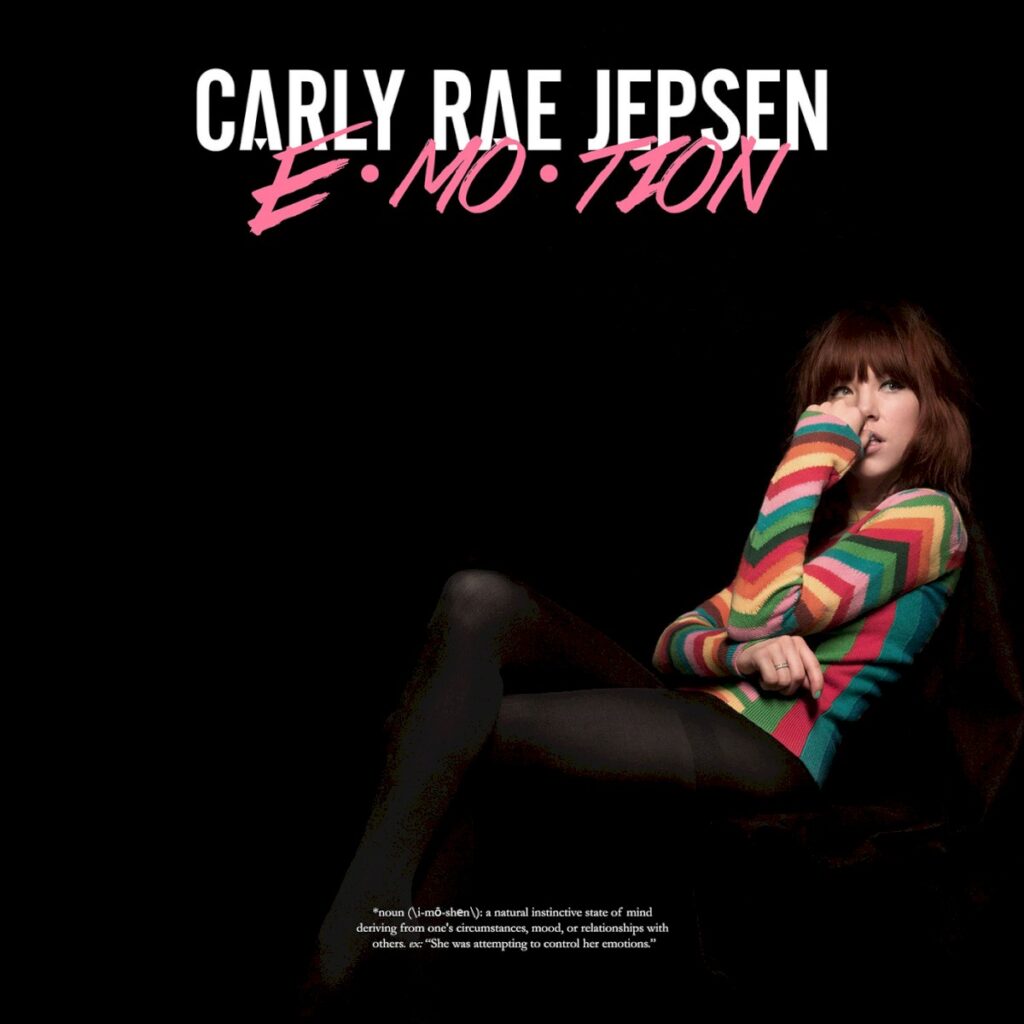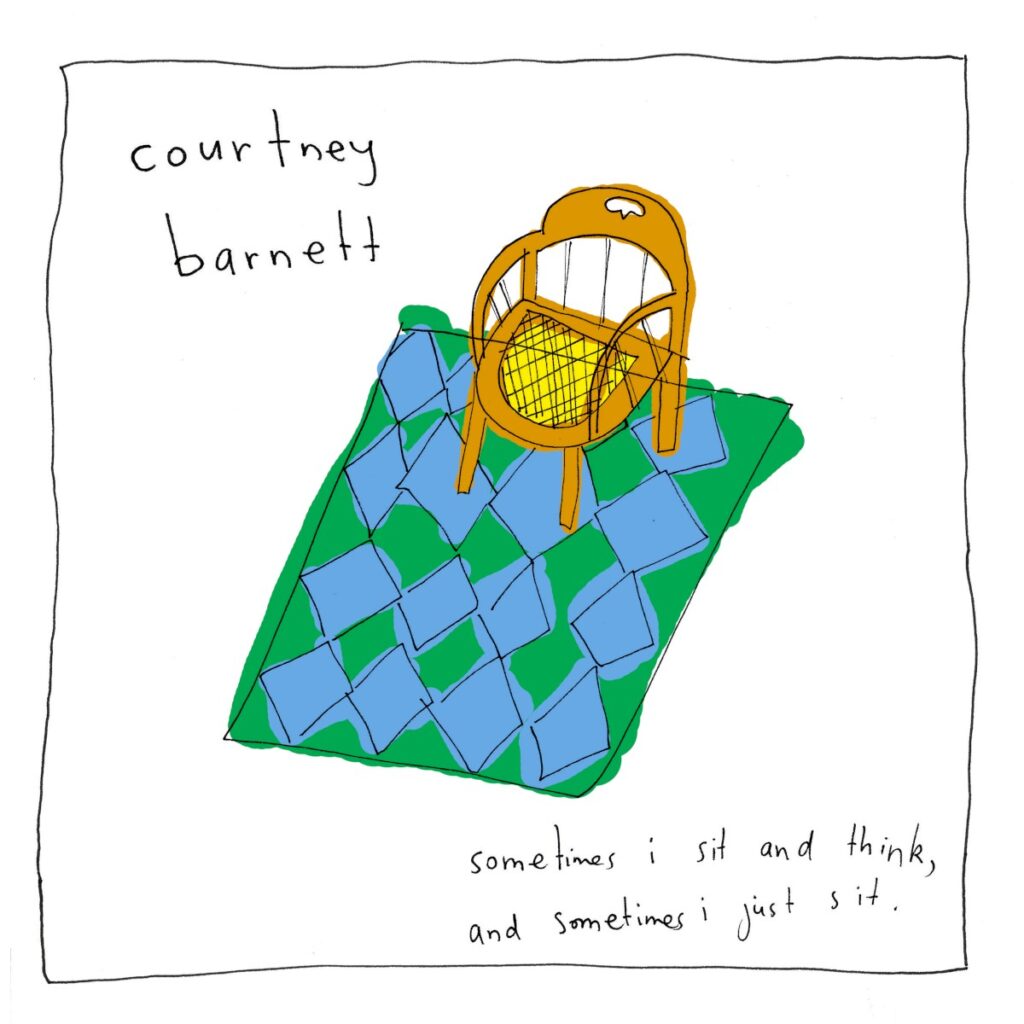25.
Taylor Swift, ‘1989’, 2014

Didn’t they tell us “Don’t rush into things”?
Didn’t you flash your green eyes at me?
Didn’t you calm my fears with a Cheshire cat smile?
Didn’t it all seem new and exciting?
I felt your arms twistin’ around me
It’s all fun and games ’til somebody loses their mind
With her fifth album 1989 – named after the year she was born – Taylor truly transcended her country origins to claim pop’s Iron Throne. The conceptual framework of 1989 is built around themes of rebirth, nostalgia, and a nuanced exploration of relationships. Swift embraced the idea of a personal renaissance, shifting from country music to pop, and this album served as a declaration of her artistic metamorphosis. The heavily 1980s-inspired sound is a nod to retro influences, offering a fresh take on synth-pop that harmonizes with modern sensibilities. This thematic direction is mirrored in the aesthetic choices for the album cover, featuring Polaroid photos that evoke a sense of longing and cherished memories from the past. Swift’s lyrical themes mature as she navigates complex relationships. Unlike her previous works that sometimes vilified ex-partners, 1989 adopts a reflective, introspective approach that acknowledges shared responsibility in relationships. This shift indicates her understanding of more intricate emotional dynamics, where blame and love are more evenly distributed. Swift’s songwriting on 1989 retains her tradition of autobiographical songwriting. However, it prioritizes emotional intensity over detailed storytelling, embracing a universal appeal that resonates with a broader audience. Tracks like Blank Space cleverly satirize Swift’s media portrayal, combining humor and vulnerability, while Style exudes timeless romanticism and nostalgia. Wildest Dreams and Out of the Woods delve into the intricacies and bittersweet nature of past romances, offering a reflective and wistful look at love and loss.
The composition of 1989 is a comprehensive departure from Swift’s acoustic and country roots, executed by an impressive roster of producers including Max Martin, Shellback, and Jack Antonoff. Swift not only co-wrote the majority of the tracks but also took on the role of executive producer alongside Martin. The production leans heavily on the use of synthesizers, programmed percussion, and processed backgrounds to create a polished pop sound that stands in stark contrast to her previous acoustic-focused albums. This layered, multi-textured soundscape reflects a significant production shift, aligning with the synth-driven ethos of the 1980s while maintaining a polished, contemporary edge. The sound is both retro and progressive, a testament to Swift’s confident embrace of pop trends without forsaking her lyrical roots. Ten years after the release of 1989, the album stands as a significant milestone in Swift’s discography, as it witnesses the transitions of her artistry into the pop realm, not only embracing but perfecting the genre. 1989 profoundly impacted Swift’s career and marks the beginning of her turning into a worldwide culture phenomenon superstar.
Remember when you hit the brakes too soon?
Twenty stitches in the hospital room
When you started crying, baby, I did too
But when the sun came up, I was lookin’ at you
Remember when we couldn’t take the heat?
I walked out, I said, “I’m settin’ you free”
But the monsters turned out to be just trees
When the sun came up, you were lookin’ at me
24.
The National, ‘High Violet,’ 2010

Sorrow’s my body on the waves
Sorrow’s a girl inside my cake
I live in a city sorrow built
It’s in my honey, it’s in my milk
The National’s fifth studio album, High Violet, is not merely a collection of songs but a carefully curated journey through emotional landscapes that resonate with the complexities of adult life. The band explores existential angst, suburban malaise urban alienation, and middle-class anxieties, painting vivid pictures of mundane routines and the simmering chaos beneath the surface of everyday existence. The National’s music captures the tension between yearning for more and the resignation that comes with adulthood, emphasizing the lyrical exploration of nuanced emotions and personal experiences. The album confronts us with the stark realities of life post-transition—where the band’s previous album Boxer navigated uncertainty, High Violet deals with the repercussions of those transitions and the search for vibrancy in a seemingly colorless world. These are particularly evident in tracks like Terrible Love and Afraid of Everyone, which delve into the psychological turmoil of staying grounded while facing modern life’s chaos. Matt Berninger’s lyrics are a cornerstone of the album, offering a literate and poetic meditation on love, anxiety, and societal alienation. The characters we meet in High Violet, unlike many of their rock counterparts, have jobs and routines, fall into predictable patterns, and navigate the labyrinth of adulthood with a sense of quiet desperation. In Bloodbuzz Ohio, for instance, the lines “I still owe money to the money to the money I owe” reflect the crushing reality of debt and a broader commentary on the economic struggles following the 2008 financial crisis. Berninger’s baritone voice serves as a conduit for the album’s meditative lyrics. Whether quietly contemplative or urgently intense, his delivery enhances the emotional weight of each track.
High Violet represents The National’s move towards a grander and more expansive sound. The album is characterized by lush instrumentation and meticulous arrangements that support its lyrical themes. The band’s signature melancholic sound is augmented by contributions from notable collaborators like Sufjan Stevens and Justin Vernon, whose influence is felt throughout the album’s expansive sonic palette. The Dessner twins, Aaron and Bryce, play a crucial role in creating the album’s intricate guitar work, which is both melodic and textural. Despite this attention to technical precision, the album eschews the slick, overly-produced sound prevalent in much of contemporary music, instead opting for a richer, analog-influenced warmth that invites deeper engagement from the listener. This is especially notable in tracks like Lemonworld, where Berninger’s undercurrent of melancholy is supported by lush, enveloping soundscapes.
This pricey stuff makes me dizzy
I guess I’ve always been a delicate man
It takes me a day to remember a day
I didn’t mean to let it get so far out of hand
I was a comfortable kid
But I don’t think about it much anymore
Lay me on the table, put flowers in my mouth
And we can say that we invented a summer lovin’ torture party
23.
Carly Rae Jepsen, ‘E•MO•TION,’ 2015

After the mind-numbing ubiquity of the globally phenomenal hit “Call Me Maybe” in 2011, Jepsen went in search of her own sound and, after co-writing hundreds of songs, landed on bright, bold synth-pop with a distinct ’80s sleekness. Emotion, marks a significant pivot in Jepsen’s artistic journey, transcending the ephemeral success of one pop single by diving into deeper, richer sonic and thematic territories.
Emotion is steeped in a retro influence, heavily borrowing from the 1980s synth-pop movement, embodying both the sound and emotional landscape associated with the era. Jepsen herself described the album as “80s pop with alternative productions,” a direction that became clear while developing the title track in New York. This influences a sound that is both nostalgic and innovative, immersing listeners in a vivid auditory world. The M83-indebted Run Away with Me announces the album with a heavily reverberated sax overture, setting the album’s sonic agenda: ’80s-style bombast, liberal vocal multi-tracking, and busy arrangements that pair rubbery, percussive synths with enveloping, formless pedal tones. At the heart of Emotion, Jepsen explores the thematic complexities of love and longing—archetypes of pop yet delivered with an authenticity that renders them universal. Jepsen’s lyrics navigate the intricacies of love with both vulnerability and optimism. This is vividly shown in lines like “I’ll find your lips in the streetlights” from Run Away With Me, where Jepsen embodies the enchantment and rush of new love, infusing a sense of immediacy and romance into the lyrical content.
The creation of Emotion involved collaborations with a diverse group of songwriters and producers, including Sia, Devonté Hynes, and Vampire Weekend’s Rostam Batmanglij, who contribute excellent works. The album’s synth and drum programming are handled by Ariel Rechtshaid, who is known for his work on HAIM’s Days Are Gone. From Hynes’ shimmering synths and somber bass lines in the twinkling Prince-inspired ballad All That, to Batmanglij, on the weird, warbling Warm Blood, each track is meticulously produced, showcasing high-quality synth work that underscores Jepsen’s vocal performances and highlights the album’s devotion to its 80s influence. Tracks like LA Hallucinations marry mall-pop and cloud-rap, with a jerky call-and-response keyboard figure that gives way to Jepsen’s oblique references to finding oblivion in intoxication.
Unlike brand-savvy superstars like Taylor Swift and Rihanna, Jepsen’s strength lies not in domineering a song with her unmistakable persona, but in letting the compositions dictate her delivery. With an uncanny melodic gift that enlivens even the most tired sentiments and a chameleonic ability to seamlessly transition between disparate production styles, Jepsen proves she’s worthy of those comparisons.
22.
Courtney Barnett, ‘Sometimes I Sit and Think, and Sometimes I Just Sit,’ 2015

He said “I think you’re projecting the way that you’re feeling
I’m not suicidal, just idling insignificantly
I come up here for perception and clarity
I like to imagine I’m playing Sim City
All the people look like ants from up here
And the wind’s the only traffic you can hear”
He said “All I ever wanted to be
Was an elevator operator, can you help me please?“
Courtney Barnett’s debut studio album, Sometimes I Sit and Think, and Sometimes I Just Sit revolves around the concept of capturing everyday moments with an incisive wit and an eye for the humorous and mundane. The album’s concept is encapsulated in its very title, suggesting a contemplative state of mind that resonates throughout her lyrics. The songs offer glimpses into various facets of life—relationships, environmental concerns, and social observations—delivered with remarkable introspection and sometimes irreverent humor. Themes of ambivalence about social obligations, the chaos of urban life, and personal reflections among others are omnipresent in Barnett’s narratives. For instance, the track Depreston traces a house-hunting experience that unexpectedly morphs into a meditation on life and mortality. Barnett meditates on mortality and consumer culture, painting a vivid picture of life’s bittersweet reality. In Elevator Operator, where she describes the life of a young office worker disillusioned with corporate monotony. In essence, Barnett manages to turn the ordinary into the extraordinary by focusing her lyrical lens on the nuances of everyday life, rendering the album both relatable and thought-provoking. Barnett’s lyrics are the cornerstone of the album’s success, characterized by their flair for storytelling, dry wit, and vivid imagery. Employing a deadpan delivery and conversational tone, she crafts narratives that are not only engaging but also brimming with humor and subtle commentary. Tracks like Pedestrian at Best exhibit Barnett’s ability to deliver rapid-fire, dense wordplay that is both self-critical and broadly observational, whereas Depreston softens its incisiveness with a contemplative tone.
From a compositional standpoint, the album features a variety of rock sub-genres, including garage rock, jangle pop, and lo-fi indie rock. The album is deeply rooted in the legacy of 1990s alt-rock, yet it retains a freshness that sets it apart from mere nostalgia. The album is produced with a raw, unpolished aesthetic that complements Barnett’s straightforward delivery. This lo-fi, garage-rock sensibility enhances the album’s authenticity, creating a soundscape that is at once engaging and unpretentious. The album’s sound is often characterized by catchy riffs and concise solos that never overshadow the storytelling but rather elevate it. For instance, tracks like Pedestrian at Best showcase Barnett’s penchant for deft guitar work that matches the urgency and energy of the lyrics, while slower tracks like Kim’s Caravan unfold with a somber contemplation matched by atmospheric instrumentation. Sometimes I sit… is a tribute to the idiosyncrasies of life, much like a modern-day reflection of Seinfeldian observation, without ever meandering into existential despair.
I’m growing older every time I blink my eyes
Boring, neurotic, everything that I despise
We had some lows, we had some mids, we had some highs
Sell me all your golden rules and I’ll see
If that’s the kind of person that I wanna be
If I’m not happy I’ll be glad I kept receipts
21.
Kendrick Lamar, ‘DAMN.,’ 2017

Having previously tackled societal issues such as racial inequality and political unrest in To Pimp A Butterfly, with DAMN., Lamar turns inward, addressing moral dilemmas, existential questions, and the complex nature of identity. DAMN. presents a dual narrative with contrasting themes: when listened to in the standard order (1-14), it showcases Lamar’s religious awakening and moral strength; conversely, in reverse order (14-1), it portrays his succumbing to sin and human flaws. This duality forms the thematic backbone of the album: each track is inherently tied to either wickedness or weakness. Songs such as BLOOD., YAH., and FEEL. reveal Lamar’s vulnerabilities, while tracks like DNA., ELEMENT., and HUMBLE. depict his defiance and resilience. The core idea resonates with Lamar’s exploration of sin and virtue through the lens of both personal and broader cultural contexts. DAMN. challenges listeners to ponder existential queries such as “Is it wickedness? Is it weakness?” inviting a deep introspection of one’s own life. Lamar’s prowess as a storyteller is evident throughout DAMN., as he paints vivid narratives using profound and poetic lyrics. The album is replete with biblical allusions, such as Kendrick comparing himself to Jesus Christ in DNA. — “I was born like this, since one like this, immaculate conception, I transform like this, perform like this was Yeshua’s new weapon.” These references underscore Lamar’s existential exploration and his quest for moral clarity in a turbulent world. In DUCKWORTH., Lamar tells a riveting tale concerning a potential alternate reality in which his life could have been lost due to a robbery incident involving his father and Anthony “Top Dawg” Tiffith, the executive producer of his music label. On this desperately sad opus, Lamar tells us that in a land where black life continues to be under persistent attack, even the transcendent capacities of genius are subject to the whims of fate.
The production on DAMN. marks a shift from the jazz-influenced sound of Lamar’s previous album, To Pimp a Butterfly, moving towards a hybrid of contemporary rap, encompassing elements of boom-bap, trap, and radio-friendly beats. This sonic blend enhances the album’s dynamic feel, with tracks like DNA. and HUMBLE. delivering aggressive, high-energy performances, while others like LOVE. and GOD. feature smoother melodies more akin to mainstream tastes. This eclecticism in production adds layers to the album’s narrative, allowing Lamar to dynamically shift moods and themes throughout the listening experience. The production, spearheaded by notable names like Mike WiLL Made-It and Steve Lacy, weaves a tapestry of beats that range from booming 808s to lo-fi, raw soul influences. The restrained use of guest features, such as Rihanna on LOYALTY., adds a pop sensibility that complements Lamar’s introspective verses without overshadowing them.
Now, in a perfect world, I probably won’t be insensitive
Cold as December but never remember what winter did
I wouldn’t blame you for mistakes I made or the bed I laid
Seems like I point the finger just to make a point nowadays
Smiles and cold stares, the temperature goes there
Indigenous disposition, feel like we belong here